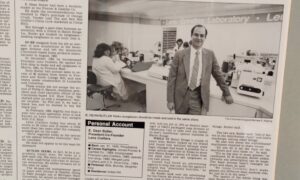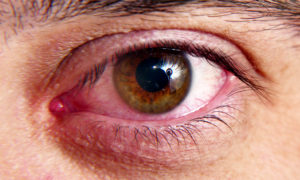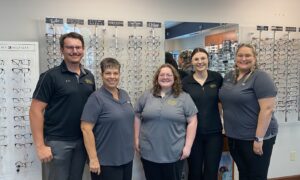By Diane Palombi, OD

May 26, 2021
When you’re a practice owner, as I was for 12 years before retiring, it’s easy to forget the process patients go through when looking for an eye doctor, and what they most want when sitting in your exam chair. The reasons they chose you may be a surprise. I was recently reminded of this when looking through the site Nextdoor, where people go to find local businesses, including doctors.
On Nextdoor in Florida, where I live part of the year, a person was searching for a new optometrist. She asked for help because she did not want her eyes dilated, and most offices she contacted said this was a requirement to see the doctor. After suggesting that perhaps she could sign off on her patient record to refuse dilation, I started thinking about it. Dilation is more important to a prospective patient than the capabilities of the doctor. What other things matter more to patients looking for an eye doctor than ODs realize?
The woman looking for a practice that would not require dilation was directed by other Nextdoor users to a big-box corporate optometry chain that is known to take retinal photos through an undilated pupil.
Why Are You Here Today?
Your first question to patients should be, “Why are you here today?” Really listen to their response. You may be busy and running behind schedule, but listen thoroughly to the patient. You may find elevated pressures in your testing, but if the patient is having problems reading through their Add, and you do not address that, you will have an unhappy patient–even if you caught a serious threat to their vision.
I always found that being a doctor was like being a detective. You have all this data, and your own instincts as a doctor, that you need to put together to make a diagnosis. It all must fit. It is easy to let something slip on a busy day that you should have paid attention to. I referred a patient out more than once because my gut said something was wrong, even though I may not have had much hard data to back up that feeling. Usually I was right.
You have to both address all threats to the patient’s eye health and vision, in addition to not forgetting the reason the patient came to you in the first place. That reason may not be the most important in terms of eye health and vision, but it is the most important to the patient.
Understand the Patient’s End Goals. What Will It Take for Them to Leave Happy?
Your patient wants to leave your office seeing better than they did when they walked in. To get them to that point, you may need to conduct a different kind of refraction than the patient is used to or requested. This may be a case of initially not giving the patient what they want so that you can deliver what they ultimately want.
For example, I always did a manifest refraction during a regular eye exam, but I would sometimes prescribe a compromise Rx if I felt the full change would be problematic. Time and a few remakes taught me that 20/happy can be a good enough prescription, depending on the patient.
On the other hand, with today’s advanced digital refraction and eyewear measuring technology, some practices will provide a much more thorough, high-tech refraction and glasses fitting than the patient is used to. Some patients may balk at that (though more will be pleased), but you may feel this is what is necessary to give them the high-quality vision and eyewear they say they want.
However you get there, focus on the patient’s ultimate goal in coming to visit you, rather than the technique or process you use to get there. I have seen in my own family the difference an OD who can get patients to their vision goal can make. My husband had a few pairs of glasses that he could not wear from another optometrist after I retired because of an extreme change in the prescription from the new doctor that he could not adapt to.
Other Articles to Explore
Ask About the Patient’s Whole Family
Patients may come to you for their own eye health and vision needs, but they may also be highly interested in finding an eye doctor for the whole family.
Make time to ask about the patient’s family, especially children who should receive a comprehensive examination annually. You can explain the important role vision plays in a child’s learning, and how development can be impacted by not having adequate vision. You can also help create a happy patient by asking about the patient’s parents and elderly relatives. Patients may not realize the many eye diseases and conditions that become more likely as we age. They will be appreciative for the information, and your welcoming attitude toward the whole family.
Your Skills + Good Interpersonal Skills = Happy Patients
We all have bad days, and it is easy to be short with your patients. My advice is to learn to become a good actor so your patients never know how impatient and irritable you are bound to feel some days. Your patient deserves your undivided attention. People skills are important. A classmate at the top of your graduating class in optometry school will not succeed if he cannot relate to his patients. A student at the bottom, on the other hand, may have a thriving practice because he treats his patients right and is an excellent communicator.
Hopefully, patients choose you as their doctor over more than whether or not you are going to dilate their eyes. Take the time to engage with your patients to ensure you are delivering the highest level of care while addressing all the things the patient has top of mind when they walk through your door.
 Diane Palombi, OD, now retired, owned Palombi Vision Center in Wentzville, Mo. To contact her: dlpod1@hotmail.com
Diane Palombi, OD, now retired, owned Palombi Vision Center in Wentzville, Mo. To contact her: dlpod1@hotmail.com



























